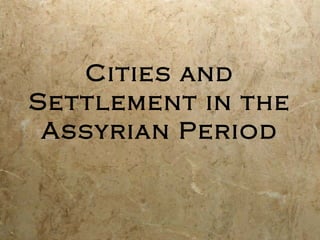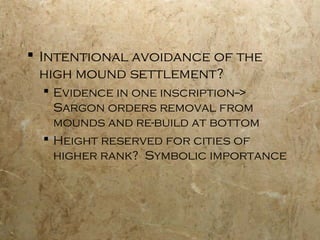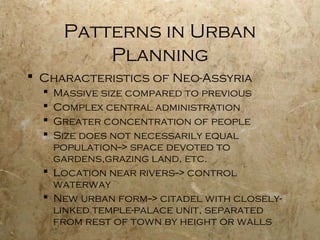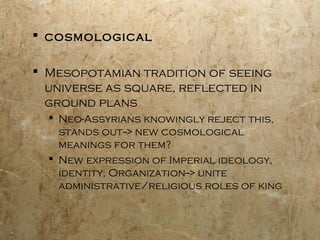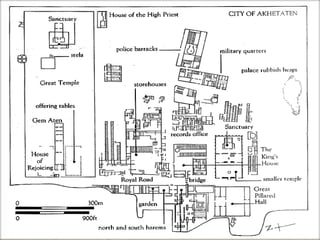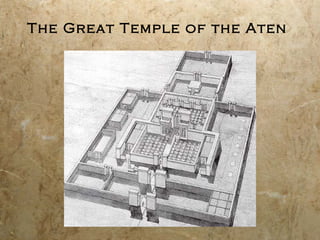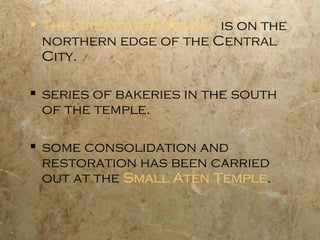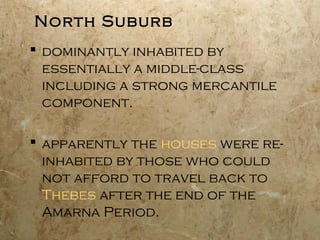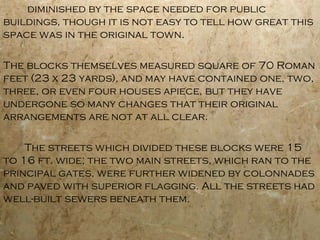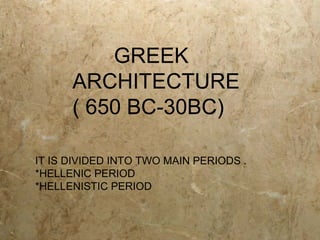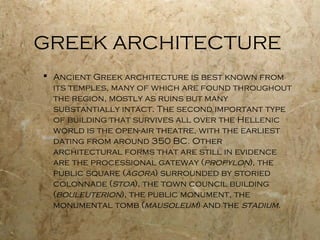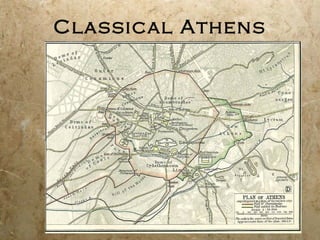The document discusses cities and settlements during three ancient periods - Assyrian, Egyptian, and Roman.
For the Assyrian period, the emergence of Neo-Assyrians led to territorial expansion and new levels of urban development. Cities fell into three categories - continuously existing, re-founded, and new foundations. Regional planning shifted north for access to agricultural land and water supply. Cities featured a citadel with a temple-palace unit separated from the rest of the settlement.
During the Egyptian period, the city of Amarna was built as the new capital by Akhenaten for his Aten religion. It was laid out with residential and administrative areas, temples, and a workmen's village.
